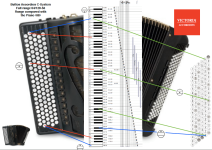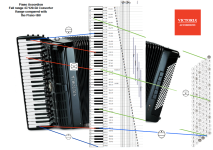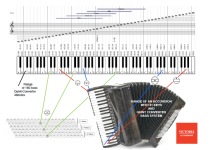Walker
🪗
I would like to share some diagrams about the range of notes on button and piano accordions.
Firstly, credit where it is due, I would like to start with button accordion - the range is truly epic. (range E1 to somewhere above the Himalayas) just joking - its C#8.
just joking - its C#8.

Next up - piano accordion - a serious concert instrument (E1 to C#8) - higher than a standard piano can go
(note: small error on the pointers here, but still an ace diagram)

Moderate quint converter - "though he be but little, he is fierce". (sorry that's Seabiscuit) Range is C2 to A7, though its big brother can go C1 to C#8.
Range is C2 to A7, though its big brother can go C1 to C#8. 
Firstly, credit where it is due, I would like to start with button accordion - the range is truly epic. (range E1 to somewhere above the Himalayas)

Next up - piano accordion - a serious concert instrument (E1 to C#8) - higher than a standard piano can go
(note: small error on the pointers here, but still an ace diagram)

Moderate quint converter - "though he be but little, he is fierce". (sorry that's Seabiscuit)

Last edited:
